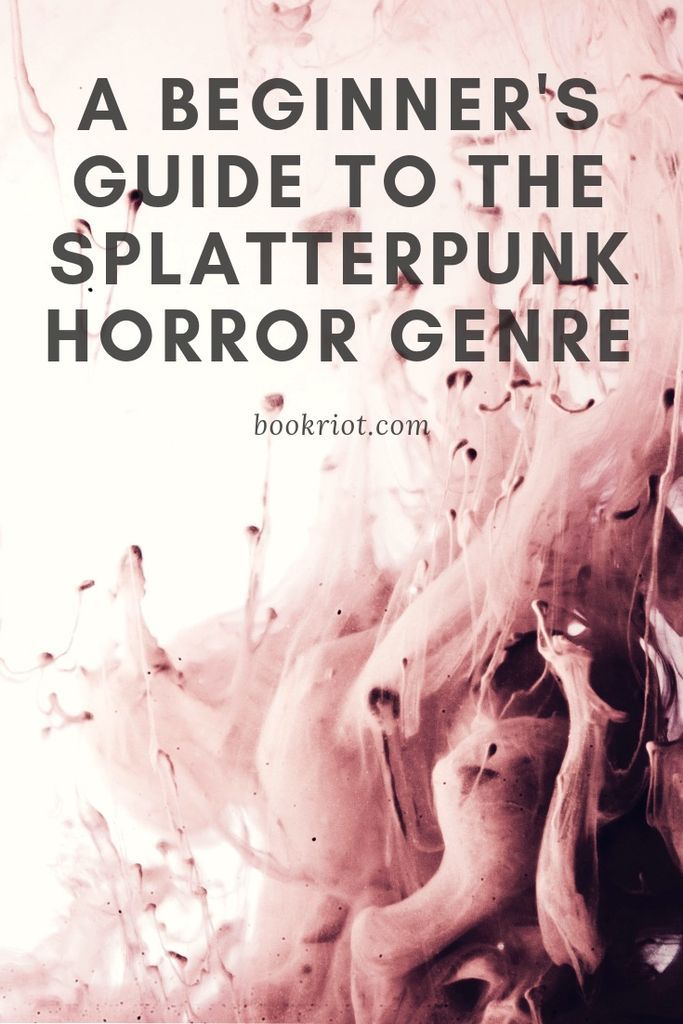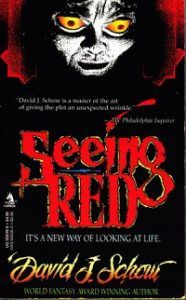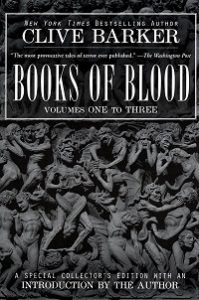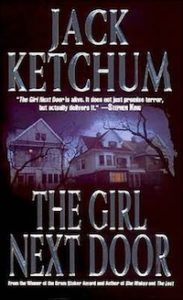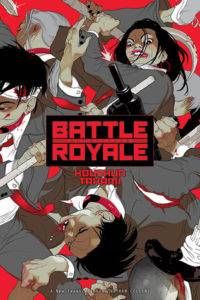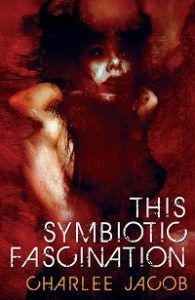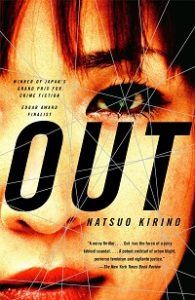You might know splatterpunk under its other names: hardcore horror or extreme horror. In some ways, they’re more descriptive and give you a better idea of what you’re in for. The downside, however, is that they erase the “punk” aspect. Like other literary “punk” subgenres, splatterpunk is a reaction. In this case, it pushes back against traditional horror narratives, which rely on suggestion and implication to instill unease. How? By showing everything. Known as the horror sub-genre with no limits, splatterpunk is gory, graphic, and violent. Abuse and sexual violence litter its pages. Its cinematic equivalent is often called torture porn. I’ll be the first to admit splatterpunk is not my preferred cup of tea, but I’ll also be the first to say that its influence cannot be denied. So here are a few recommendations to get you started. They include some classics as well as modern examples and a couple selections considered traditionally outside the sub-genre but have a lot in common with it. It goes without saying, the titles on this list require content warnings for graphic violence, sexual assault, and explicit gore. If you’re sensitive to any of these topics, please proceed with caution.
Short Story Collections
Seeing Red by David J. Schow
Splatterpunk short stories are probably the best way to familiarize yourself with the sub-genre. Not as much of a time commitment as a novel, and you’ll soon realize whether these kinds of books are for you. Schow himself coined the term “splatterpunk,” so I’d be failing my duties if I didn’t include his collection. Not only does it give you a good idea of the origins of the genre, it also offers a snapshot of the general aesthetic of 1980s horror literature.
The Mirror of Night by Roberta Lannes
A prolific short story writer, Lannes has published in many splatterpunk anthologies and magazines. Her work paved the way for other female writers of horror fiction. This short story collection can be difficult to track down, but it includes an early example of the genre, “Goodbye, Dark Love,” which explores family relationships and abuse.
The Books of Blood by Clive Barker
The Books of Blood are a multi-volume series collecting Barker’s short stories. If you’ve watched Barker’s cinematic projects (e.g. Hellraiser), you’ll find his wild imagination and amazing visuals in these pages. The first volume contains “The Midnight Meat Train,” which has a film adaptation you might have watched.
In The End, Only Darkness by Monica J. O’Rourke
This collection serves as a look into what the genre looks like today. What sets O’Rourke apart is that she includes humor in her stories. Not something you’d necessarily expect in this sub-genre, but a welcome inclusion nonetheless.
Classic Splatterpunk Novels
The Woods Are Dark by Richard Laymon
I can hear you now. Isn’t hardcore horror supposed to be full of over-the-top violent moments and sexual deviancy, you ask? I wouldn’t make the assertion that it must contain those things, but a fair amount of it does. I can’t claim otherwise. Laymon’s novel about a group of travelers who get hunted by cannibals has all of that and more. If you want to read something wild and that will make you yell WTF?! at any given moment, this book is for you. (No shade. For real. I have those impulses, too.)
The Girl Next Door by Jack Ketchum
Most people would choose cannibal-centric Off Season as an example of Ketchum’s work. I chose to include The Girl Next Door for the reasons Rioter Katie elaborates on here. The best examples of horror hit a chord. What makes humans descend into savagery? Why are people drawn toward taking advantage of those they have more power and privilege over? Extreme horror can shock and disgust, but the most effective stories leave us emotionally changed.
The Exquisite Corpse by Poppy Z. Brite
Lost Souls served as my first exposure to Brite’s works. Rather than vampires, though, The Exquisite Corpse takes us into the mind of a serial killer. Or two. And cannibal serial killers, at that. Let’s face it. A lot of cannibals run through the pages of hardcore horror. After all, it’s a transgressive genre, and eating other people is a transgressive act. In The Exquisite Corpse, the serial killers consider themselves to be artists, leading to a very visceral read.
The Cipher by Kathe Koja
Back in the heyday of the horror boom, some mainstream publishers launched their own horror-centric imprints. Koja’s debut novel kicked off Dell’s Abyss line. (Note: Dell is now part of Penguin Random House, and Abyss no longer exists.) The basic premise involves a pair of lovers discovering a black hole in the floor of an abandoned storage room. What’s so special about this black hole? Anything you put in it comes back changed. Since this is a horror novel, you can probably guess where this leads.
Modern Examples of Hardcore Horror
Battle Royale by Koushun Takami
In a now-familiar premise, Battle Royale portrays a totalitarian future in which school children are forced to kill each other until one is left standing. Published several years before The Hunger Games, Battle Royale shocked the Japanese reading public when it was released. As you’d expect, there’s extreme violence, but what makes this novel work are the many ways in which petty adolescent grudges and relationships are twisted by intense fear. And isn’t that the heart of splatterpunk? Exploring the horrific acts that can be carried out by people and the circumstances that drive them to it?
Succulent Prey by Wrath James White
By now, you’ve realized extreme horror is not for the faint of heart. Brutal, disturbing, and gross, this genre tests your limits. Succulent Prey continues that trend but raises some interesting questions along the way. The novel’s protagonist was kidnapped by a serial killer when he was a child. He, however, was the only one of the killer’s victims to escape and survive. But that he’s older, he finds himself developing some questionable tastes and preferences.
This Symbiotic Fascination by Charlee Jacob
Jacob’s novel departs from the other novels I’ve included on this list by being a vampire novel. Not to say vampire novels can’t contain extreme acts of graphic violence, because they certainly can and This Symbiotic Fascination proves that. Its premise revolves around a lonely woman who takes up with a serial killer. That one-line summary doesn’t even begin to encompass what this novel is about, but it is the beginning. Jacob is known for pushing the boundaries of splatterpunk and defying expectations. If you’re looking for something different, put her on your list.
In the Miso Soup by Ryu Murakami
Most horror aficionados have probably heard of Murakami through the film adaptation of his novel, Audition. In the Miso Soup takes a completely different approach by introducing us to Kenji, a young Japanese man who works as a tour guide. An American tourist hires Kenji to take him on a guided tour through the seediest parts of Tokyo’s red-light district. It’s nothing Kenji hasn’t done before, except he soon suspects his client may be a serial killer. Unlike Western examples of splatterpunk, In the Miso Soup begins slow. Many Japanese horror novels do. But if you’ve seen Audition, you know Murakami’s skill at building tension and suspense into a single, astonishingly violent act.
Out by Natsuo Kirino
There’s a sub-genre of Japanese thrillers known as “iyamisu.” In a nutshell, these thrillers explore the darkest aspects of human nature, often with stunning acts of grotesque violence. Perhaps it’s not the most faithful adherence to splatterpunk, but if you like exploring the way human nature ties into human acts of depravity, iyamisu is a category of Japanese literature worth looking into. In Out, a young woman kills her husband and then enlists her coworkers’ help to cover up the crime. Things take off from there. Kirino has made a name for herself as a writer of Japanese feminist noir, and her works explore the way social pressures force women into extreme acts, as well as the relationships that exist between them. If you like Out, I also recommend checking out Grotesque and Real World.
Mr. Suicide by Nicole Cushing
One of the most exciting voices to come out of the horror genre in recent years, Cushing does something risky with this novel. She writes it in second person POV. I know there’s a lot of prejudice against this POV choice. Believe me, I get you. In fact, I count myself among those people who hate it. But I promise it’s used to great effect here. Mr. Suicide forces the reader into the identity of a young boy who struggles with depression. But as the boy ages, that mental voice evolves into something else. Characters with disturbing mindsets populate horror books. Mr. Suicide puts us into the position of watching how that mentality comes about and being utterly unable to stop it. Isn’t that terrifying? And there you have it, a sampling of the splatterpunk genre. If you’re already a splatterpunk reader, what are some of your favorite titles? I’m well aware I left off some famous names. And if you’ve decided splatterpunk is not the horror genre for you, check out our general horror tag for suggestions that might be more up your alley.
